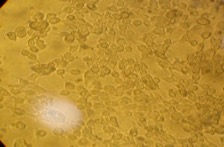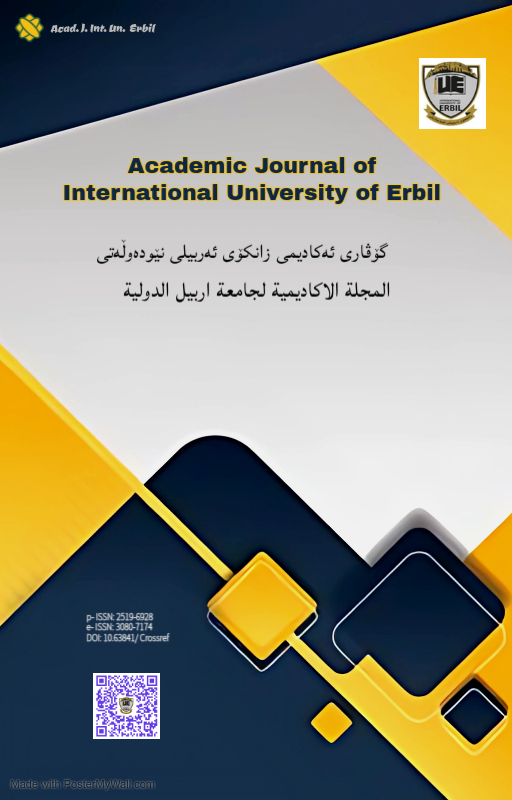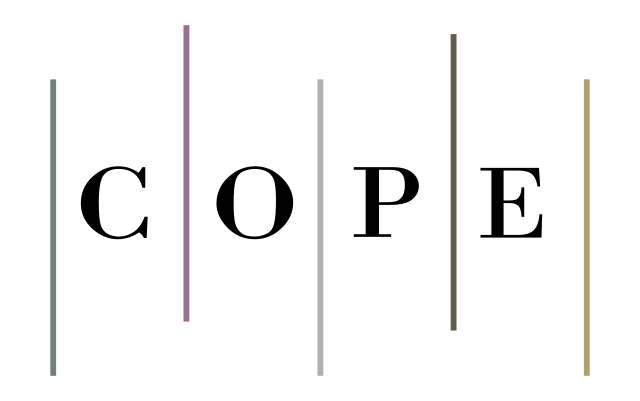Cytotoxic Effects of Flaxseed (Linum usitatissimum L.) Aqueous Extract on Different Tumor Cell Lines: An in vitro Study
Cytotoxic Effects of Flaxseed (Linum usitatissimum L.) Aqueous Extract on Different Tumor Cell Lines
DOI:
https://doi.org/10.63841/iue24502Keywords:
AMN-3 cell line; Aqueous Extract; Cytotoxic effect; Flaxseed; L20B; Rhabdomyosarcoma (RD) cell lineAbstract
Mortality rates from cancer are rising continuously worldwide, different methods are used to treat cancer such as chemotherapy, however, chemotherapy is cost ineffective and lacks selective toxicity, since it damages cancerous and healthy normal cells as well, therefore, seeking for natural alternatives is an insisted demand in clinical sitting. Medicinal plants and its derivatives are processed for the direct use as herbal or traditional medicine and attempted for clinical and experimental purposes. Flaxseed (Linum usitatissimum L.) is an oilseed utilized in industrial practice as well as natural health products. One of the major traditional interests in flaxseed was its important use in the prevention and treatment of many diseases, including cancer. The current study aimed to investigate the in vitro cytotoxic effect of flaxseed aqueous extract on tumor cell lines, and normal cell lines.
Two tumor cell lines (AMN3 and RD) and a normal cell line (L20B), at three time periods (24, 48, and 72 hrs of exposure) with different concentrations (0, 78.125, 156.25, 312.5 and 625µg/ml), were assessed.
Significant decrease in AMN3 cells viability was detected at the exposure period of 48 hrs in concentrations (156.25 (P= 0.002), 312.5 (P= 0.002) and 625 (P= 0.0004) μg/ml) except 78.125 µg/ml ((P= 0.360), of aqueous flaxseed extract were observed, significant decrease in AMN3 proliferation also observed at 72hrs of exposure in all concentrations of the extract (156.25 (P= 0.000), 312.5 (P= 0.002) and 625 (P= 0.005) μg/ml) except 78.125 µg/ml ((P= 0.328),which shows non -significant differences.
Concerning RD tumor cell line, all applied concentration (0,78.125, 156.25, 312.5, 625 μg/ml) revealed significant impact on the tumor cell lines at the three applied exposure period, without significant impact on the normal cell line (L20B).
Flaxseed has a concentration, and exposure period dependent impact on the AMN-3 and RD tumor cell lines, in vitro. Further studies are needed to detect this anti-proliferative effect and the pathway of flax seed extract in cancer treatment, both in vitro and in vivo.
References
Y. Merkher, E. Kontareva, A. Alexandrova, and R. Javaraiah, “Anti-Cancer Properties of Flax Seed Proteome,” Proteomes, vol. 11, no. 4, 2023.
A. Calado, P. M. Neves, T. Santos, and P. Ravasco, “The Effect of Flaxseed in Breast Cancer: A Literature Review,” Front. Nutr., vol. 5, no. February, pp. 1–7, 2018.
W. Kooti et al., “Effective Medicinal Plant in Cancer Treatment, Part 2: Review Study,” J. Evidence-Based Complement. Altern. Med., vol. 22, no. 4, pp. 982–995, 2017.
A. F. Qader and M. Yaman, “Blackberry (Rubus fruticosus L.) Fruit Extract Phytochemical Profile, Antioxidant Properties, Column Chromatographic Fractionation, and High-performance Liquid Chromatography Analysis of Phenolic Compounds,” Aro-the Sci. J. Koya Univ., vol. 11, no. 2, pp. 43–50, 2023.
W. Nowak and M. Jeziorek, “The Role of Flaxseed in Improving Human Health,” Healthc., vol. 11, no. 3, pp. 1–20, 2023.
E. Ebrahimi, Z. Nazamara, N. Hassanzadeh, A. Yarahmadi, N. Ghaffari, F. Hassani, et al., "Biomedical Features of Flaxseed against different pathologic Situations: A narrative review," Iran J. Basic Med. Sci, vol.24, no.5, pp. 551-560, 2021.
Y. Y. Shim, B. Gui, P. G. Arnison, Y. Wang, and M. J. T. Reaney, “Flaxseed (Linum usitatissimum L.) bioactive compounds and peptide nomenclature: Areview,” Trends Food Sci. Technol., vol. 38, no. 1, pp. 5–20, 2014.
M. Mukhija, B. C. Joshi, P. S. Bairy, A. Bhargava, and A. N. Sah, “Lignans: a versatile source of anticancer drugs,” Beni-Suef Univ. J. Basic Appl. Sci., vol. 11, no. 1, 2022.
D. P. Okinyo-Owiti et al., “Evaluating the cytotoxicity of flaxseed orbitides for potential cancer treatment,” Toxicol. Reports, vol. 2, pp. 1014–1018, 2015.
Anmar Saadi Aboud, Mohammed A. AL-Jaleel, and Zena Hassan Jazar, “The effect of hot aqueous extract of flax seeds and fenugreek seeds against bacteria that isolated from mouth of smoking people,” Int. J. Sci. Res. Arch., vol. 6, no. 1, pp. 189–194, 2022.
X. P. Ye et al., “Flaxseed protein: extraction, functionalities and applications,” Food Sci. Technol., vol. 42, pp. 1–13, 2022.
S. G. Al-Shawi, Z. K. Al-Younis, and N. F. A. Al-Kareem, “Study of cumin antibacterial and antioxidant activity of alcoholic and aqueous extracts,” Pakistan J. Biotechnol., vol. 14, no. 2, pp. 227–231, 2017.
M. Mcallister and Z. Finklestein, “CULTIVATION IN VITRO OF CELLS DERIVED FROM A HUMAN RHABDOMYOSARCOMA,” Cancer, vol. 24, no. 3, pp. 520–526, 1969.
E. Duizer, K. J. Schwab, F. H. Neill, R. L. Atmar, M. P. G. Koopmans, and M. K. Estes, “Laboratory efforts to cultivate noroviruses,” J. Gen. Virol., vol. 85, no. 1, pp. 79–87, 2004.
W. Abd Wahab and A. N. Adzmi, “the Investigation of Cytotoxic Effect of Cinnamomum Zeylanicum Extracts on Human Breast Cancer Cell Line (Mcf-7),” Sci. Herit. J., vol. 1, no. 2, pp. 23–28, 2017.
R. K. Ahmad, K. F. Dizaye, and A. A. AL-Asady, “Cytotoxic Effects of Pistacia khinjuk Seed Extracts on Different Cell Lines and its Mitogenic Effects on Blood Lymphocyte In Vitro,” Cihan Univ. Sci. J., vol. 4, no. 1, pp. 13–20, 2020.
A. L. Buckner, C. A. Buckner, S. Montaut, and R. M. Lafrenie, “Treatment with flaxseed oil induces apoptosis in cultured malignant cells,” Heliyon, vol. 5, no. 8, p. e02251, 2019.
X. G. Zou et al., “[1–9-NαC]-linusorb B2 and [1–9-NαC]-linusorb B3 isolated from flaxseed induce G1 cell cycle arrest on SGC-7901 cells by modulating the AKT/JNK signaling pathway,” J. Funct. Foods, vol. 52, pp. 332–339, 2019.
Y. Di, F. De Silva, E. S. Krol, and J. Alcorn, “Flaxseed Lignans Enhance the Cytotoxicity of Chemotherapeutic Agents against Breast Cancer Cell Lines MDA-MB-231 and SKBR3,” Nutr. Cancer, vol. 70, no. 2, pp. 306–315, 2018.
F. Musavi et al., “Properties of Linum usitatissimum Seed Aqueous Extract Against Colon Cancer Cell Lines,” Jentashapir J. Cell. Mol. Biol., vol. 13, no. 4, 2023.
S. N. Shaban, K. I. Mokhtar, S. J. Arief Ichwan, A. E. Abbas Ashour, and B. E. Mustafa Alahmad, “Flaxseed (Linum usitatissimum) Extract Activity on Human Oral Fibroblasts (HOrF) Cell Line,” Ann. Dent., vol. 27, no. November, pp. 50–54, 2020.
M. K. . Shaban S. N, 2 Ichwan S. J. A, and .2 Al-Ahmad B. E. M, “Potential Effects of Flaxseed (Linum usitatissimum) in Tissue Reparative Processes: A Mini Review,” J. Biomed. Clin. Sci., vol. 5, no. 1, pp. 1–7, 2020.

Downloads
Published
Issue
Section
License
Copyright (c) 2025 Academic Journal of International University of Erbil

This work is licensed under a Creative Commons Attribution-NonCommercial-NoDerivatives 4.0 International License.











